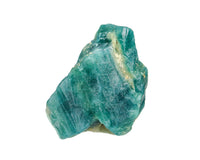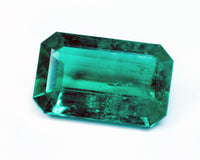- 1. Fordite, Detroit Agate
- 2. The History of Fordite, Detroit agate
- 3. Detroit Agate, Fordite Properties and Deposits
- 4. The Artistic Value of Fordite
- 5. Fordite ,Detroit Agate for sale from KenKenGems
Fordite, Detroit Agate
Nature spends thousands, if not millions, of years to craft a gem. We have to rely on a felicitous confluence of many factors that turn separate elements into something precious. In other words, gemstones are by-products of natural processes. But nature isn’t the only one who knows how to create something new from something familiar. It sounds incredible but once a car factory got to emulate - completely unintentionally - a happy concatenation of circumstances. Years of automotive paint buildups at old Ford factories in Detroit gave life to a marvelous man-made ‘stone’ fordite.
The History of Fordite, Detroit agate
Fordite, also known as Detroit agate or Motor City agate, boasts vibrant colors and psychedelic swirls. Today, it is a sought-after artifact for collectors and those who grieve over the bygone days of the industrial greatness of the United States. However, just a few decades ago, fordite was nothing more than a waste, a by-product of automobile manufacturing.
Once, car bodies were painted by hand with spray guns. Over time, paint settled layer by layer on the tracks and skids of the equipment, as well as the walls and the floor of the paint shops. In order for the paint on the car body to harden, it was baked in an industrial oven at a high temperature. Needless to say, the paint stuck to the equipment also hardened and eventually turned into shapeless growths of countless colors.
The build-ups of paint got to grow to monstrous sizes. They had to be chipped off so that they did not impede car production. This waste was simply thrown away. One day, a worker at a Ford plant in Detroit decided to take a piece of chipped paint home. It is unknown who it was and which intentions he had. However, it is known that he polished the salvage and got an incredible stone-like material. Inspired by its beauty, he started crafting toys and jewelry for his wife and children. Soon, his co-workers followed suit.
This is how Fordite aka Detroit agate was discovered. It was named after the brand of cars that were manufactured at this car factory. The very first mentions of the new man-made ‘mineral’ date back to the 1940s.
As soon as this discovery became public, people rushed to car factories to help clean the premises from paint and, simultaneously, mine fordite. Unfortunately, since the 1980s, spray painting is no longer in use. Instead, manufacturers utilize an electrostatic process that allows every paint particle to get on the body of a car and not on the equipment. Therefore, the original raw material for Fordite production is no longer available. Today, the man-made stone has a nostalgic significance and its supply is limited. It can only be found at old abandoned factories.
Detroit Agate, Fordite Properties and Deposits
Clearly, the largest deposits of hardened car paint were found in the former automotive capital of the world, Detroit. Detroit agate is prized for an alternation of vibrant colors and a gray primer coat. Factories in Ohio, which specialized in van and truck manufacture, provided cured paint with its own statement colors. You can recognize Ohio fordites by the predominance of earthy shades of green and brown, as well as layers of brighter colors such as yellow, orange, and turquoise.
Great Britain had historic car factories as well. The raw material coming from there showcases not only multi-colored layers of enamel paint but also shimmering metallic inclusions.
Spray painting technologies deployed at the dawn of the automotive industry are not the only source of the Motor City agate. Layers of graffiti on the concrete walls in the industrial and railways areas provide bizarre and fancy patterns.
The Artistic Value of Fordite
Today, many collectors hunt down Detroit Agate. Looking at fordite pendants or earrings, connoisseurs of industrial history can easily tell when and where the material occurred. Paint colors give a hint. After all, car paints were selected based on the fashion trends reining in certain years.
In the 1940s, cars, for the most part, carried black or brown enamels. In the 1960s, automotive paints started showcasing a greater range of vibrant finishes. The most colorful specimens of the artificial stone appeared in the 1970s due to a tremendous palette of colors cars used to carry. In the 1980s, muted automotive paints were in vogue, and this also affected the color range of fordite. At the same time, factories that painted vans produced more subdued varieties of the stone. They normally lack psychedelic stains and swirls.
Cutting fordite is fairly difficult since it is fragile. This is due to the fact that the layers of paint have an uneven density. Some of them were baked more than 100 times while others less than a dozen times. Plus, enamel, paint, and primer have different adhesion properties. If handled without due care, they can simply come off. Because of its fragility, the stone is most often cut en cabochon. Cabochons can be polished to a vitreous luster that accentuates the layers of history trapped inside the man-made material.
Fordite (Detroit Agate) for sale from KenKenGems
Getting a piece of history is easier than ever with KenKenGems and our fordite, Detroit agate collection. Every man-created stone we deliver is unique in its color and pattern. Fordites gathered at old automotive factories in the USA boast eye-catching combinations of white, grey, and vibrant colors. Incorporate such a stone in a pendant or earrings and it will turn heads wherever you go. Hurry up, fordite cabochons are available in a limited supply. Tomorrow, Detroit agates might be found only in private collections. Don’t miss your chance to invest in the industrial gem - its price is bound to increase tenfold soon.








